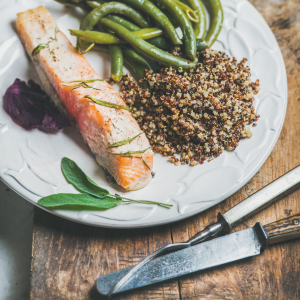January is the perfect time to start developing new habits that can boost your mood, relieve stress and make you feel better, like getting the recommended 150 minutes per week of moderate-to-vigorous physical activity. But forming and sticking to new habits can be challenging. Luckily there’s a science-backed approach called “habit stacking” that can make this easier for you.
What is synaptic pruning?
To understand habit stacking, we first need to know about a biological process called “synaptic pruning”, which is when your brain prunes or trims away connections between unused neurons (brain cells) and strengthens ones between neurons used more often. For example, if you practice swimming for five years, your brain strengthens the connections between the neurons involved in swimming. If you’ve never swum before, you’re not strengthening those links, so your brain prunes them away and puts energy towards building connections required for other skills. Because synaptic pruning happens with the building of every habit, you can take advantage of the process to help you form new ones. 
What is habit stacking?
Habit stacking takes advantage of your current daily behaviours to help you develop new ones. Coined by S.J. Scott, it is stacking a desired habit on to a current habit. It’s a type of implementation intention, but instead of pairing a new habit with a specific time and place, you pair it with an existing habit. Here’s the general habit stacking formula:
- After/before [current habit], I will [new habit].
Habit stacking examples
- “After I change out of my work clothes, I will change into my workout clothes.”
- “Before I eat lunch, I will go for a walk or wheel outside.”
Habit stacking works because your current habits are already wired into your brain, so connecting a new habit to an existing one, makes you more likely to succeed. When you’re comfortable with creating a habit stack, you can create more than one stack at a time:
- “Whenever I see stairs, I will take them rather than use the elevator.”
- “Whenever I see a parking space farther from my destination, I will park there.”

How to habit stack
- Find the right cue or trigger: The cue should happen as often as you wish your new habit to take place. For example, if you want to do a habit every day, don’t stack it on a habit that just happens on Wednesdays. To help this process along, list out some of your current daily habits, like getting out of bed, showering and brushing your teeth.
- Make sure you consider timing: If you want to exercise daily, for instance, but your mornings are usually hectic, choose a cue in the evening instead.
- Make the cue specific: If you want to be more active during the day, just saying that you’ll walk or wheel more is too vague. Instead, say you’ll walk or wheel for 15 minutes daily after you finish eating lunch.
Here’s an example of how to habit stack:
- Cue (trigger): Your stomach growls.
- Action (behaviour): You take a walk or wheel around the block for 15 minutes.
- Reward: You eat a tasty lunch (it tastes even better because you feel accomplished!)
Remember that habit stacking is linking small behaviours to habits you already have, and when done over time, it can help you establish a new healthy routine. Who knows, your daily lunchtime walk could turn into a three-kilometer jog!









